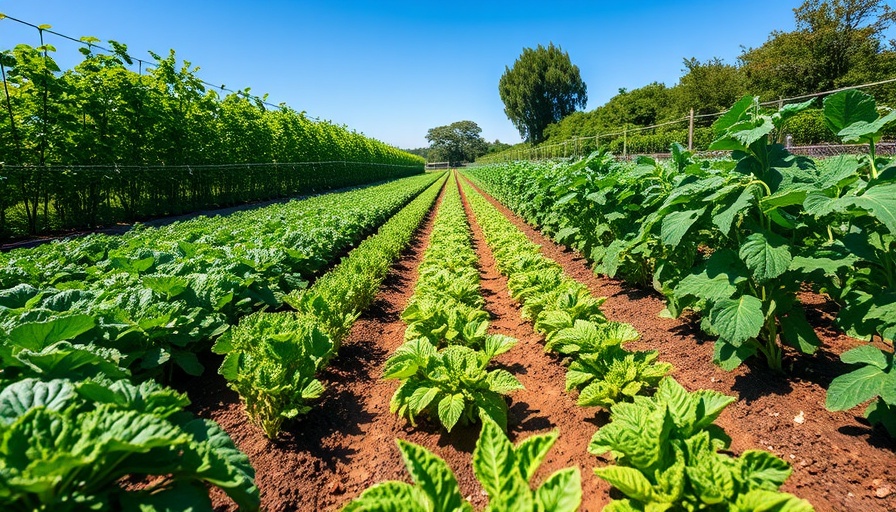
Understanding the Watering Needs of Blueberries
When it comes to successfully growing blueberries, understanding their watering needs is crucial. Blueberry plants thrive best when their watering routine aligns with their unique root structure and growth stages. Unlike many perennial shrubs, blueberries have a shallow yet expansive fibrous root system that requires careful attention. These roots, which extend about 1.5 feet deep and even wider, play a pivotal role in how the plant absorbs water and nutrients from the soil.
Why It's Critical to Water Your Blueberries Properly
The health of your blueberry plants often hinges on adequate watering, particularly during the fruiting phase. Studies indicate that mature blueberry bushes can consume two to three gallons of water daily, especially in humid, sunny conditions. Giving them enough moisture is not only vital for producing plump berries but also for ensuring strong growth for the subsequent year’s harvest. If the bushes become dehydrated, you may find shriveled fruit or stunted growth, ultimately impacting your yield.
Factors That Influence Watering Frequency
Many variables determine how often you should water your blueberry plants:
- Soil Type: Sandy soils drain more quickly, requiring frequent watering, while heavy clay retains moisture longer.
- Climate: Hot, sunny days will sap moisture rapidly from the soil, necessitating more frequent watering sessions during peak summer months.
- Plant Age: Newly planted blueberries need more water as they work to establish strong roots compared to mature plants.
- Container vs. Ground: Blueberries in containers typically need more watering than those planted in the ground or raised beds.
- Growth Stage: Active growth and fruit development phases demand higher water intake than during dormancy.
Tips for Efficient Watering
To streamline your blueberry plant’s watering regimen, consider using a few practical strategies. First, apply water directly at the plant’s drip line, which is the area beneath the outermost leaves, to effectively saturate the roots. Secondly, consider using mulch to retain moisture in the soil and reduce evaporation. This simple yet effective measure will help maintain soil temperature and moisture levels, benefiting your blueberry bushes.
Signs Your Blueberries Need More Water
Pay close attention to telltale signs that might indicate your blueberry plants require additional watering. For instance:
- Leaves Turning Yellow: This could be a sign of stress due to inadequate moisture.
- Dry Soil: If the soil feels parched and crumbly, it’s likely time for a watering session.
- Shriveling Berries: If the blueberries start to shrink, it’s crucial to increase water intake to ensure a fruitful harvest.
Conclusion: Maximize Your Blueberry Harvest
Knowing how often to water blueberry plants can make a significant difference between a bountiful harvest and a mediocre one. Factors such as soil type, climate conditions, and plant age all play a vital role in tailoring your watering approach. Make the small adjustments recommended in this guide, and you’re likely to enjoy a thriving blueberry crop that brings joy to your home and a delicious taste to your garden. Ready to transform your blueberry patch into a fruitful paradise? Start applying these top watering strategies today!
 Add Row
Add Row  Add
Add 


Write A Comment